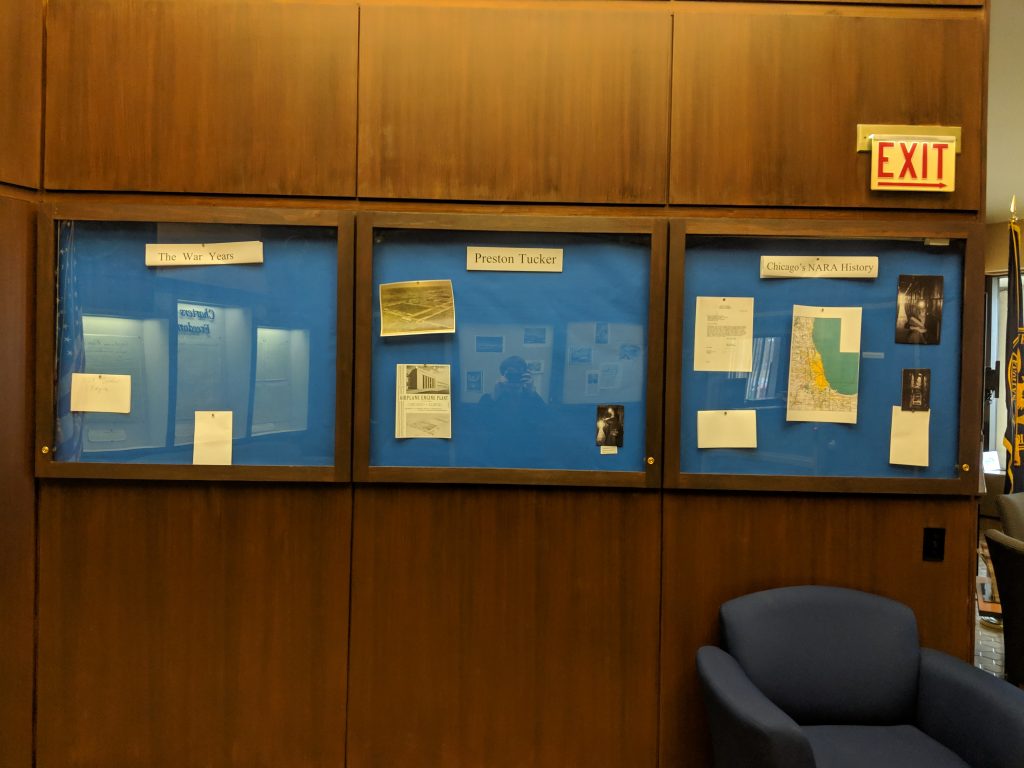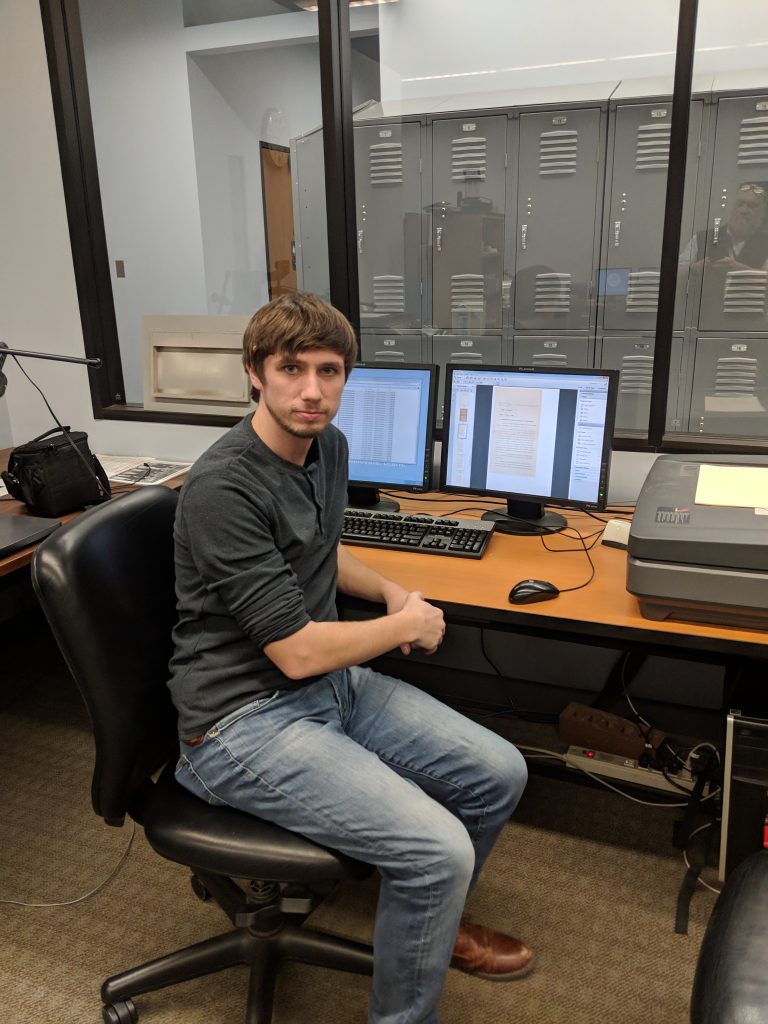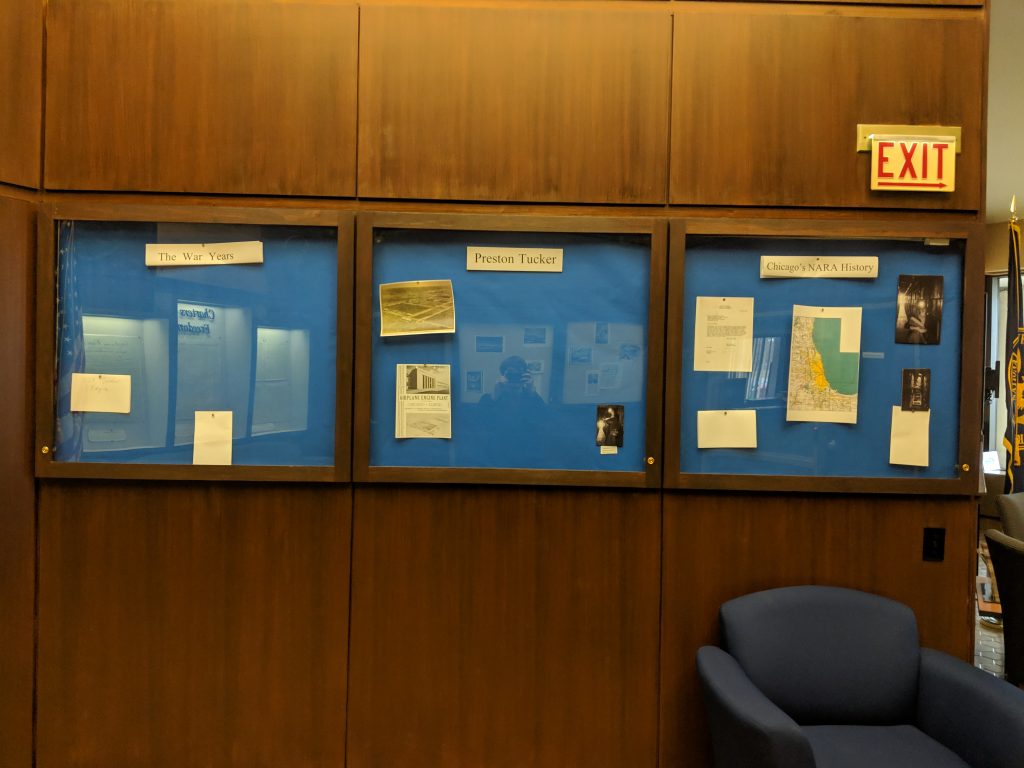Internship at National Archives and Record Administration in Chicago
By Brian Schamber, MLIS Student
My internship with the National Archives and Record Administration at Chicago was a very informative experience and made contacts with some fantastic archivists. Over the course of five days I worked on two major projects as well as other minor projects and helping the staff where help was needed.
My first project was humidifying and flattening records of a court case regarding the chair of the women's committee to the World's Columbian Exhibition, totaling to about 2 folders worth of materials. I was trained to use the humidification tank and flatten the records in a safe way, a process which took about two days to do. Once the records were flattened we scanned them for a patron who requested copies.
The other major project that I worked on was the creation of an exhibit which outlined the history of the Dodge Chicago Plant, which built B-29's during the Second World War, was purchased by controversial car designer Preston Tucker in the 1950's and would ultimately be the area were the National Archives Chicago facility would be built. The exhibit was put into
three display cases in the lobby of the building, next to their exhibit on the Charters of Freedom.
Each panel would talk about a section of the properties history, starting with the factory, then Tucker's factory, and finally the National Archives records facilities in the Chicago area. For this
project I worked closely with one of the archivists pulling boxes of materials, and find documents, maps, and photos to scan and put up for display. I helped the archivists prepare and mock up the layout for exhibit, and create labels with citations for each document used in the exhibit. This process took all 5 days and the archivist is still working on finishing the exhibit.
I also shadowed two other archival technicians while one was accessioning a collection and the other while they were performing reference help to patrons. For the accessioning project I learned how Federal archivists accession records series and the type of paperwork and computer programs that they utilized to establish intellectual control over their vast collections.
With the other archival technician I shadowed showed me how reference work is conducted via email, since the majority of contact with the archives is done digitally. She showed me how they respond to emails and what types of requests are made most frequently, which were
naturalization records.
Over my time in the Chicago Regional headquarters I couldn't help but compare my experience to my internship two years ago at NARA's College Park facility. The latter of the two was a vast network of archivist and reference staff, state of the art conservation laboratories, and administrative cubicles, while the Chicago Regional facility was much more akin to a small archives that I was used to volunteering in. The entire archival staff also did reference work, and each person helped out where they could, which was quite amazing to witness the array of jobs one person did each day. I think that this experience opened my eyes a bit to range of tasks that an archivist can do in one day, and it's one of the aspects that I now look forward to in a career.


